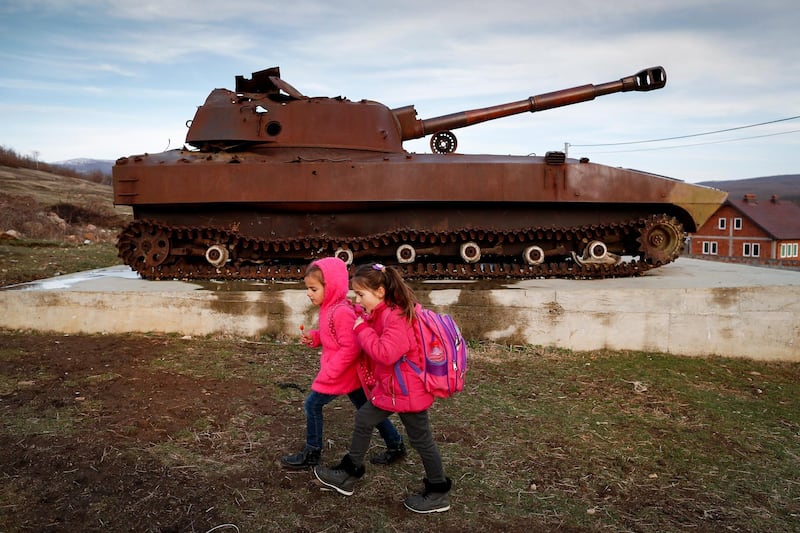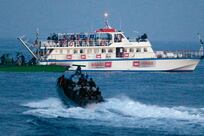It was early on a Wednesday evening in Pristina when the bombs began to fall. For more than two months in the spring of 1999, Nato forces destroyed Yugoslavian military assets and buildings, waging an air campaign to push Serbian forces out of the province of Kosovo.
The assault began 20 years ago this week, and while the war may have ended, the turbulent politics have never gone away. Kosovo continues to bear the scars left behind by what was one of the first instances of humanitarian military intervention.
The Yugoslav leader Slobodan Milosevic who was later tried for war crimes, had ordered the displacement and killing of thousands of ethnic Albanians.
He was given repeated opportunities to end the bloodshed, but chose to ignore them. Had the outside world not stepped in, large-scale ethnic cleansing would have certainly taken place there.
Kosovo is often cited as the high point of humanitarian intervention, and yet the example set there also highlights the limits of such an approach. In the years since, the question of humanitarian intervention has been raised multiple times, most often in relation to countries of the Middle East, but what Kosovo demonstrates, two decades on, is that the hardest part of any campaign begins after the bombs stop falling.
The horrors of what happened in Kosovo are scarcely imaginable today. Entire villages were rounded up and massacred. Whole neighbourhoods were set alight. Even now, the scale of what happened is unknown. For many in Kosovo, it may be too early to remember.
For starters, Kosovo's national status has never been resolved. Serbia still claims the territory. And, while more than a hundred countries, including the United States, have recognised the former Serbian province, others, such as China – which also sits on the UN Security council – have not.
Fierce tensions between the remaining Serbs and the Albanian majority also persist. The impact of the war – the deaths, the maimings, the mental anguish – lingers. Beyond its borders, Kosovo is a deeply emotive issue: Serbians consider the land part of their national mythology and there is still immense public pressure to retake it.
Both Serbia and Kosovo are hamstrung by the issue, unable to move forward. Both want closer ties with the European Union and to begin accession talks, but until Serbia recognises Kosovo and relations are normalised, that is impossible.
Last year, in an effort to end the impasse, the presidents of both Serbia and Kosovo tentatively spoke of “border adjustments”, whereby a small majority-Serb part of northern Kosovo would be incorporated into Serbia, and a small Albanian-majority part of southern Serbia to Kosovo.
But in the Balkans, tugging at the threads of borders could rapidly bring violence. Germany's chancellor Angela Merkel was definitive last year: “The territorial integrity of the states of the Western Balkans has been established and is inviolable.” There are so many unresolved border issues that opening one could easily spark clashes elsewhere.
Kosovo's long journey out of Serbia's shadow stands in sharp contrast to the aims of humanitarian intervention. Meanwhile, in the years since Pristina, no region has felt the adverse effects of foreign intervention more than the Middle East.
In Libya, where Nato intervened in 2011 to halt attacks on rebels and civilians, the country remains divided, split between rival power centres. Businesses and individuals remain trapped in limbo; eight years on, there is still violence and uncertainty.
In Syria, arguments over intervention have raged for years. Ironically it was Russia, not any western power, that finally muscled in, with the aim of protecting the Syrian president and his regime, rather than the nation’s people.
But, if any moment effectively ended the humanitarian intervention as an idea and a viable strategy, it was the Iraq invasion of 2003. Four years after the Kosovo airstrikes started, almost to the day, America's "shock and awe" bombing of Baghdad began. A principle that had started as a response to genuine need had become a mere means for western powers to project their will.
The legacy of the 2003 invasion will be felt for generations. When the bombs stopped falling from western fighter jets, others began to explode across Iraq's cities. This was just the start of years of chaos, from which the country is yet to recover.
No one who witnessed the aftermath of the Iraq invasion could ignore its devastating effects. But equally, no one who recalls the run-up to the Kosovo war could doubt that something had to be done, in order to prevent much worse crimes. Both countries are still picking up the pieces. But while Kosovo has survived, the doctrine of humanitarian intervention has not.





